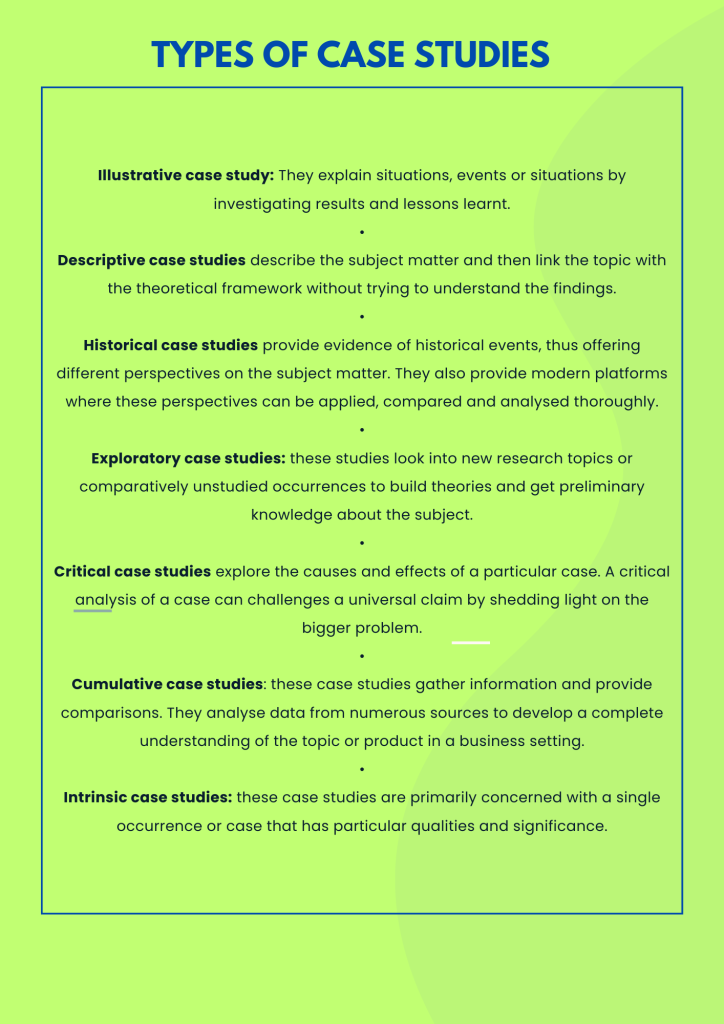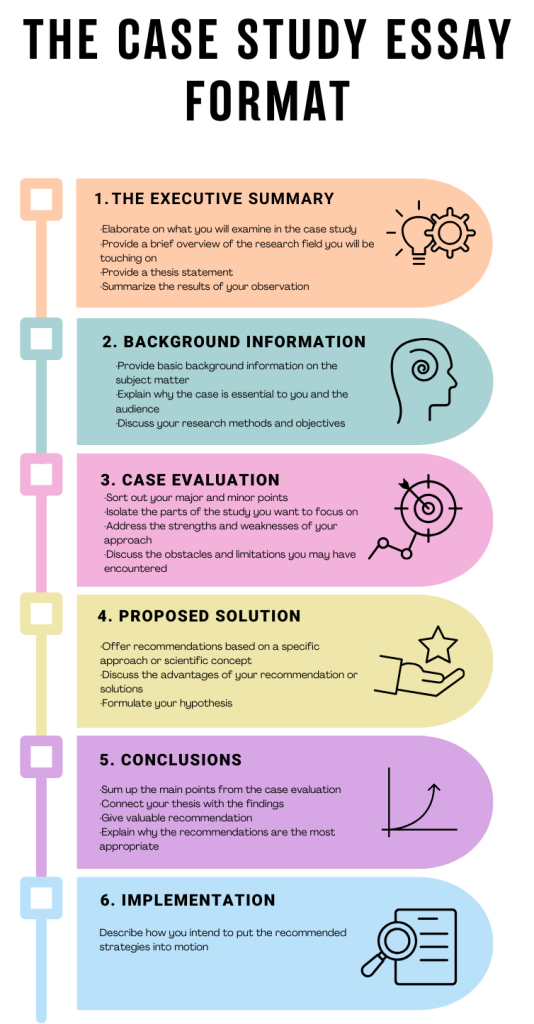How to write a case study
Case studies are significant in researching trends and certain scenarios in the academic sector. This research method has been employed in multiple disciplines which include; education, health, psychology, political science, journalism, anthropology, and human resource managements. Businesses are also adopting case studies as advertising and marketing tools. In this article, we will equip you with necessary skills to write a strong case study.
What is the definition of a case study?
A case study is the process of analysing an issue or an event and recommending possible solutions. The issues to be studied are normally based on actual people, a group, or an event. It is important to note that these situations can change according to the requirements of the field of study or subject matter.
Difference between a case study and a research paper
A case study is a thorough examination a specific group or a situation during a certain period in time. Various aspects of a research phenomenon are examined to check and identify patterns and causes of the behaviour or occurrence in a case study. The approach of a case study focuses more on the topic and considers it carefully. This can be contrasted against a research paper. A research paper is an extended essay that follows a structured framework and provides comprehensive details, arguments, and evidence on a particular subject. It provides an overview of the broad background and goal of your research. Researching and referencing material from books and the internet are standard procedures for creating research papers. As a result, the subjects and material covered are more varied.
A case study’s target audience is likewise restricted to individuals who genuinely need to concentrate on that topic. At the same time, in research papers, students, instructors, and researchers make up most of the audience.
You should also learn how to write a book report because its something you will come across it in your coursework.
What are the various types of Case studies?
The objectives of various case studies are to investigate problems in a situation, environment setting, or an organization. Case studies can be used as a research tool in multiple subjects like the arts, psychology, economics, or politics. Below are some of the common types of case studies that students may encounter;
- Illustrative case study: they explain situations, events or situations by investigating results and lessons learnt.
- Descriptive case studies describe the subject matter and then link the topic with the theoretical framework without trying to understand the findings.
- Historical case studies provide evidence of historical events, thus offering different perspectives on the subject matter. They also provide modern platforms where these perspectives can be applied, compared and analysed thoroughly.
- Exploratory case studies: these studies look into new research topics or comparatively unstudied occurrences to build theories and get preliminary knowledge about the subject.
- Critical case studies explore the causes and effects of a particular case. A critical analysis of a case can challenge a universal claim by shedding light on the bigger problem.
- Cumulative case studies: these case studies gather information and provide comparisons. They analyse data from numerous sources to develop a complete understanding of the topic or product in a business setting.
- Intrinsic case studies: these case studies are primarily concerned with a single occurrence or case that has particular qualities and significance. Intrinsic case studies aim to gain a deeper understanding of the topic or subjects by looking into their background and interactions with their environment.

Types of case study essays
Benefits of writing case study essays
Deep understanding: Case studies offer a clear comprehension of a particular event, phenomenon, or individual while taking into consideration its actual context.
Finding patterns and relationships: These tasks can assist researchers in identifying patterns, connections, and causative elements that would not be seen using alternative research techniques.
Providing hypotheses: This kind of research can generate ideas for more studies as well as workable answers to issues that arise in the real world.
Examining uncommon or complex events: These studies might provide light on unusual or complex occurrences that would be difficult to observe using conventional research techniques.
Flexibility: Case studies provide research designs more adaptability, allowing students to modify their approaches to better fit the particulars of the case they are studying.
Many data sources: There may be a need to employ a number of different data sources.
Case study format
In the realm of academic writing, every genre of writing follows a specified format and a case study is not exceptional. A good case study format is important since it’s the first sign that showcases your understanding of the given task. A case study format consists of the sections discussed below;
- The executive summary.
- Give a brief summary of the subject matter to be analysed in the case study.
- Provide a summary of the research field you will be studying.
- Provide a clear and concise thesis statement.
- Provide a summary of your findings from the observation.
- Background information
- Present basic information on the subject matter.
- Provide an explanation of why the case is important to you and the audience.
- Elaborate your research methods and objectives.
- Case Evaluation
- Take note of your major and minor points.
- Highlight the parts of the study you intend to focus on.
- Discuss the advantages and disadvantages of your approach.
- Highlight the challenges and hitches you may have come across during your study.
- Proposed solutions
- Provide recommendations. They should be based on a specific approach or concept.
- Explain the advantages of your recommendations or suggested solutions.
- Formulate and state your hypothesis.
- Conclusions
- Provide a summary of the main points from the case evaluation section.
- Link your thesis with the findings.
- Offer valuable recommendations.
- Briefly explain why the recommendations stand as the most suitable.
- Implementation
- Describe how you plan to put the recommended strategies to action.
- Citations
- Cite the relevant sources of your data using the applicable format.

Steps in formatting a case study essay
How to write a case study: A step-by-step guide
Here is a step-by-step guide on how to write your case study;
Step 1. Preparation and research
- Choose a case: if your instructor has not provided you with a case to examine, select one
- Choose your method or approach of collecting data.
- Establish the case study objective
- Select the right candidate for your case study
- Write down a list of your credible sources
- Explore your key issues in-depth.
Step 2: Drafting
Once you have researched and gathered the necessary data, the next step is drafting your case study. Drafting includes the following steps;
- Create your case study outline
A case study outline is structured like any other academic paper, with an introduction, a body, and a conclusion. A case study’s outline consists of several blocks;
- Introduction
Describe what the case study is centered around.
Present the issue.
Explain important terms.
Establish a hypothesis.
Relevance of your case study.
- Body
Provide Background information on the subject matter.
Present your data and analysis.
Objectives of the case study.
- Conclusion
Provide a concluding statement.
Results/Achievements.
Recommendation/proposals: talk about the strategies you employed to try to accomplish your objectives.
- References
Cite all the credible sources of your information.
- Proofreading and Editing
Once you are done composing your draft, read through it to ensure the following;
- Your case study follows the correct format.
- Ensure consistency and flow of your work.
- Correct any grammatical or punctuation errors.
- Ensure you have used the correct citation and referencing style.
How to Create a Title Page
A title page format depends on the writing style applied. Here are the elements your title page should have;
- It should have a captivating title.
- The Title Should have the words’ case study’ in it.
- The Title should contain a minimum of 5-words and a maximum of 9 words
- Include your name and contact information.
- The final copy of your paper should contain 500- 1500 words.
Case study citations
The citation format to be applied depends on the writing style employed in the case study. Below are reference formats for the most common writing styles;
- APAcase study citations format
Author(s) or Editor(s) of the case study. (Year of publishing). Title of chapter or case study. In the First initial. Last Name and First Initial. Previous name (Eds.), Title of book (pp.) Publisher’s Name.
- MLAcase study citations format
Author’s Last Name, First Name. Case Study Title (in italics). Location of the Publisher, Journal, or Organization.
- Harvard style case study citations format
Author or Editor’s Last Name, Initials. (Year) “Title of your case study” [Case Study], Journal Title, Volume (Issue), pp. page numbers.
Summing up
To sum up, a case study is one of the most effective ways to understand what transpired with a person, a situation or an event. Writing a case study essay requires planning, research and crafting skills. By following this detailed guide, you can craft case studies that captivate your audience, offer insightful analysis, and have a relevant impact on your field. This invaluable skill can open doors to new opportunities and enhance your credibility and impact, whether you’re a student, a professional, or an academic researcher.
Do you need professional assistance?
We hope you have understood how to craft a case study; however, a case study requires extensive research, which is time-consuming. Our case studies assignment help experts online at Skilled Tutorials are available 24/7 to offer you the professional assistance you might need in your essays. Please place your order with us for high-quality and plagiarism-free papers.
